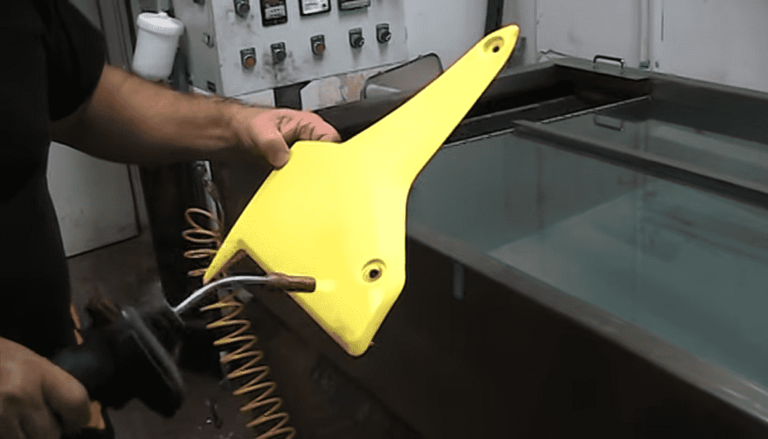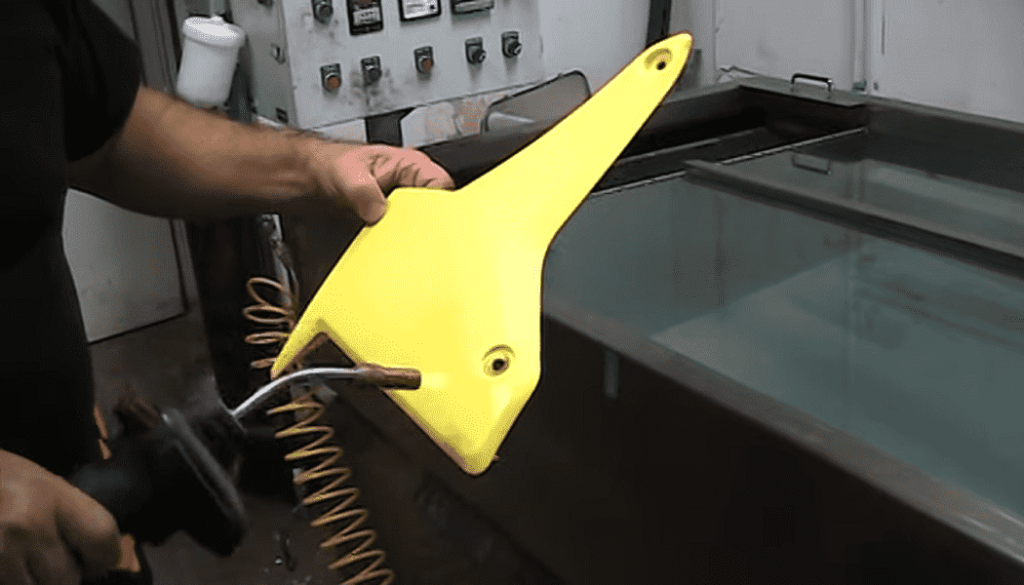
How to Paint Polypropylene? [A Complete Guide]
Painting polypropylene is not that difficult if you know the appropriate process. Sometimes, it can be notoriously challenging material due to its low surface energy and resistance to adhesion. But if you execute the process carefully, you can paint over polypropylene.

Achieving a successful paint job requires specific techniques and materials tailored to this unique plastic. Proper surface preparation, cleaning, sanding, application of specialized adhesion primers and compatible paints, etc. are key components of paining polypropylene. Let’s see details about this process for a lasting and visually pleasing finish.
Can You Paint Over Polypropylene?
You can paint over polypropylene. Painting over polypropylene requires proper preparation for adhesion. Cleaning the surface thoroughly, removing dirt and grease, and lightly sanding it for better paint adherence are the initial steps before painting.
If you apply a plastic adhesion primer designed for polypropylene, it will promote paint bonding. Applying multiple thin coats will enhance the finish. Moreover, sufficient drying times between coats should be given. However, results can vary due to polypropylene’s resistance to adhesion. But following these steps, you can paint over polypropylene.
How to Paint Polypropylene?
Painting polypropylene is possible but it can be a challenging task due to its resistance to adhesion. However, with the right approach and materials, you can achieve satisfactory results. Let’s see a step-by-step guide on how to paint polypropylene.
- Step-1: Surface Preparation
Begin by cleaning the polypropylene surface thoroughly. Use a mild detergent or soap and water to remove any dirt, dust, grease, or contaminants that might hinder paint adhesion.
Rinse the surface with clean water and allow it to dry completely. A clean and dry surface is crucial for proper paint bonding.
- Step-2: Sand the Surface
Lightly sand the polypropylene surface using fine-grit sandpaper (around 220 grit). Sanding creates a slightly rough texture. This texture will improve the paint’s ability to adhere to the surface.
Wipe away any sanding dust with a clean, damp cloth.
- Step-3: Apply an Adhesion Primer
Choose a plastic adhesion primer that is specifically suitable for polypropylene or similar plastics. This primer helps create a bond between the surface and the paint.
Apply the primer according to the manufacturer’s instructions. Generally, you can use a brush or spray for application. Allow the primer to dry thoroughly.
- Step-4: Select the Right Paint
Search for paints that are designed for use on plastics. Look for labels like “plastic spray paint” or “plastic bonding paint.”
Acrylic or enamel paints are often recommended for their flexibility and durability on plastic surfaces.
- Step-5: Paint Application
Apply the paint in thin, even coats. Multiple thin coats provide better coverage and adhesion than one thick coat.
Follow the recommended drying times between coats. This helps prevent paint from lifting or peeling due to inadequate drying.
Step-6: Curing Time
After applying the final coat of paint, allow it to cure for the duration recommended by the paint manufacturer. Curing time ensures the paint fully bonds to the surface.
- Step-7: Optional Sealer
For added protection and longevity, apply a clear acrylic sealer after the paint has dried and cured. The sealer helps shield the paint from scratches and environmental factors.
- Step-8: Test and Monitor
Before painting the entire surface, test the process on a small, inconspicuous area. This allows you to ensure the desired adhesion and appearance before committing to the full project.
What Paint Can You Use on Polypropylene?
Choosing the right type of paint for polypropylene surfaces is essential to ensure proper adhesion and durability. While polypropylene’s low surface energy can make adhesion difficult, there are specific paints formulated to adhere to plastics effectively. You can see the guide on the types of paint you can use on polypropylene below.
- Acrylic Paint
Acrylic paints are versatile and can adhere well to polypropylene surfaces with proper surface preparation.
Look for acrylic paints labeled as suitable for plastics or designed for multi-surface use.
- Enamel Paint
Enamel paints are known for their durability and strong adhesion. This paint is also a good option for polypropylene.
Choose enamel paints formulated for plastics, as they are designed to bond effectively to low-energy surfaces.
- Spray Paint for Plastics
Many manufacturers offer spray paints specifically designed for use on plastic surfaces, including polypropylene.
These paints usually contain adhesion promoters that enhance their ability to bond to plastic materials.
- Vinyl Dye
Vinyl dyes are formulated to penetrate the surface of plastics. This paint creates a bond that can resist peeling and chipping.
Vinyl dyes are often used in automotive applications for plastic interior components.
- Specialty Plastic Paint
These paints often have adhesion-promoting additives to overcome the challenges of painting on low-energy surfaces.
What Is the Best Way to Paint Polypropylene?
To paint polypropylene effectively, the best way is to prepare surface and apply paint with brush. Cleaning the surface is a must before applying paint. For enhancing adhesion, sanding is also necessary. Moreover, applying a suitable primer will increase adhesion.
Then, applying a suitable paint acrylic or enamel with brush is convenient. After that, applying multiple thin coats of paint is essential for better adhesion and coverage. You should allow each coat to dry properly before applying the next. This process is the best way to paint polypropylene.
Is Polypropylene Easy to Paint?
Polypropylene is not easy to paint due to its low surface energy and resistance to adhesion. Its smooth and non-porous surface makes it challenging for paint to stick effectively. However, with proper surface preparation, including cleaning, sanding, and using adhesion-promoting primers, it is possible to achieve satisfactory results. Using paints formulated for plastics and following careful application techniques will help enhance adhesion and durability. Despite these efforts, achieving a long-lasting and flawless finish on polypropylene can still be more challenging compared to other surfaces.
Final Words
Proper preparation and the right techniques can lead to successful results to paint polypropylene. Adhering to thorough cleaning, sanding, and utilizing plastic adhesion primers are key steps to improving paint adhesion.
Choosing suitable paint formulations and applying multiple thin coats enhances the chances of a durable finish. Nevertheless, it’s important to acknowledge that achieving ideal results on polypropylene requires patience, testing, and vigilance in maintaining the painted surface over time.
